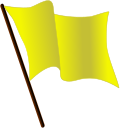Liberal Party
| In a global context Liberalism |

|
| Ideological roots |
| Types |
| Political parties |
| Adjacent ideologies |
Various political parties calling themselves the Liberal Party have existed across time and space, and were most prominent around the late 19th century and in the British Empire. Here are a few of the more notable ones:
Liberal Party of Canada[edit]
The Liberal Party of Canada is currently the governing party in Canada, holding 169 of the 343 seats in the House of Commons. It was previously the third-largest party, behind the NDP and the Conservatives.
The party has been responsible for the creation of the welfare program and many other safety net social policies, along with the legalisation of same sex marriage and medical marijuana.
British Liberal Party[edit]
The British version of the Liberal Party formed from the Whig Party in 1859. It was powerful until 1890, and returned for a while after the 1906 election. It declined in the 20s and was largely replaced by the Labour Party as the UK's primary left-wing party in 1922.
The party hit an electoral nadir in the 1970s, with its number of MPs brought down to single figures, and a scandal involving party leader Jeremy Thorpe who allegedly responded to a blackmail attempt by a former gay lover by hiring a hitman to murder the blackmailer. The attempt failed and the former lover's dog got shot instead. Another memorable character in its dwindling roster of MPs from this period was the morbidly obese Cyril Smith who had a figure reminiscent of the "walrus of love" Barry White, only without the love. He made up for that by sexually abusing teenage boys.[1]
The party's fortunes revived somewhat in the early 1980s, when the Liberals (then led by diminutive Scot David Steel) entered into an electoral pact with the new SDP (Social Democratic Party - formed by a bunch of centre-left splitters from the Labour Party). Following the 1987 general election, the Liberal Party merged with the SDP to form the Liberal Democrats. However, a rump Liberal Party continued, formed of members who objected to the merger that formed the LibDems.
New Zealand Liberal Party[edit]
Generally considered New Zealand's first political party, the New Zealand Liberal Party ruled from 1891 to 1911. Like the Canadian party, it was responsible for a number of social programs, including the introduction of pensions and women's suffrage. In the 1930s, a remnant of the party eventually merged with its opponents, the Reform Party, to form the National Party, which went on to become the country's major centre-right party.
Liberal Party of Australia[edit]
Australia's Liberal Party is a (right-wing classical and conservative) "liberal" party, for which the word "liberal" is used to mean the opposite of what it does in the United States. The party stands against most causes of the progressive-liberal persuasion except for gun control, which it supports.
The party's name dates from the 1940s, with the word "liberal" denoting "opposed to communism" rather than "socialist."
In 2019, a party called The New Liberals was formed in Australia. This party is similar to what the U.S. word "liberal" means.
See also[edit]
- Political parties of Canada
- Political parties of the United Kingdom
- Liberal Democrats
- Liberal Democratic Party
References[edit]
- ↑ Nick Hopkins and Jake Morris. Cyril Smith child abuse inquiry 'scrapped after his arrest'. BBC, 17 March 2015.